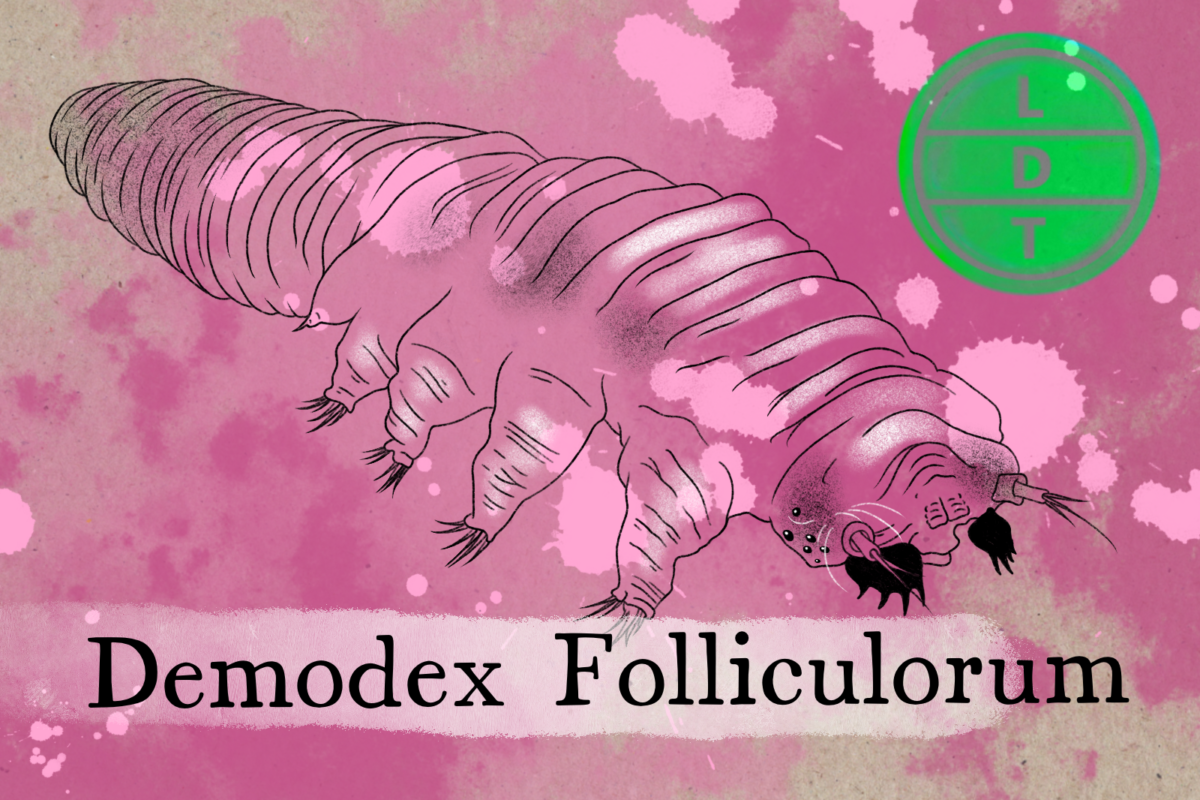“…and today we’re talking about a tiny animal that likes oil, but not the kind that comes from olives. But more on that later.”
Warning: Learning about this animal might give you the heebie jeebies or more likely a nervous itch. If you or the kids are sensitive to that, viewer discretion is advised.
What other species is closest to humans? Some would say dogs and others would say cats. But there is a closer species, whether you like it or not. The smallest forms of life are all around you every day and some of these life forms share a kingdom with us. Tiny animals called demodex mites live in very close proximity to humans, but are they friends or foes? The distinction can sometimes become blurred in Life, Death, and Taxonomy.
Measure Up
Welcome to the beloved Measure Up segment. The official listener’s favorite part of the show! The part of the show when we present the animal’s size and dimension in relatable terms through a quiz that’s fun for the whole family. It’s also the part of the show that’s introduced by you when you send in audio of yourself saying, singing, or chittering the words Measure Up into ldtaxonomy at gmail dot com. We don’t have a new Measure Up intro!
Length
- 0.3 to 0.4 mm (0.012 to 0.016 in) long
- How many demodex mites go into the length of the largest living arachnid on earth?
- Hint: The largest arachnid is the giant forest scorpion in terms of body length. Its pincers are so large that it uses them to kill prey more than its tail venom.
- 562.5 demodex. These scorps can be around 23 cm (9 in) in length.
Lifespan
- 14 to 16 days
- How many demodex lifespans go into Prometheus, a tree that was possibly one of the oldest living organisms on earth before it was cut down.
- Hint: Prometheus was found in Nevada’s great Basin. It was cut down for research purposes by the then graduate student Donald Rusk Currey. To his credit, he and other researchers at the time didn’t know the tree was world-record-level old when it was felled. Still, the decision remains controversial.
- 114,138.187 lifespans. Prometheus was around 5,000 years old.
Major Fact: Face to Face with Friends
Demodex exclusively lives on human skin and almost always is found on the face. Here’s where it gets even more interesting. It’s fairly likely that you have demodex mites on you right now…
Before you freak out, it’s worth pointing out that you are a cornucopia of microbiology, much of which is very helpful to you–like your gut biome.
Demodex mites are usually dormant during the day. If you wipe your brow, they probably won’t be affected. They are nestled safely in your pores.
When it’s your turn to sleep, your tiny night watchmen are on duty. They come out of your cozy pores and go about munching on your skin oils.
The real question is: are these demodex friends, foes, or neutral parties hitching a ride?
If you google demodex mites, you will see a sea of dubious dermatological claims that these guys are causing all kinds of skin issues along with pictures of uncomfortable looking rashes.
However, we don’t know that these mites cause skin problems, though there is a correlation between mite populations and rosacea.
Still, these mites don’t just eat on your face. It was once thought that they could not poop, which sounds good for us. But researchers thought that the waste would accumulate in their gut until they died and then it would all be released at once, causing skin irritation.
But thankfully, as of a 2022 genome study, we now know that mites can, in fact, poop. Even though that’s gross, it means that they relieve themselves in extremely tiny deposits, instead of all at once.
Issues caused by demodex overpopulation, are usually the fault of something else, like a weakened immune system.
So, if demodex isn’t a parasite, is it merely a commensalist?
The same research paper that told us these mites have butts also suggested that they could one day learn to become symbiotes.
They have it so good on our faces that they have optimized to live with us. They require fewer proteins than relatives that don’t live on humans. The researchers theorize that they may learn to integrate into our ectodermal ecosystem to the point that they help, rather than mooch.

